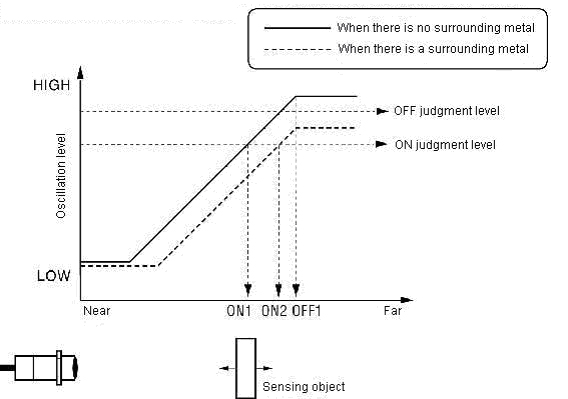Why does the influence with a surrounding metal of the Proximity Sensor occur?
For the proximity sensor, when there are the metals other than the sensing object circumferentially, the oscillation that decreases when the sensing object approaches normally falls overall.
Therefore, the position of the sensing object when reaching at output ON level is farther than normal, the malfunction such as the extension of the sensing distance is caused.
Relation between positions of sensing object and oscillation level of proximity sensor
Description
(1) The oscillation level of the proximity sensor falls as the sensing object (metal) approaches.
(2) The oscillation level falls overall regardless of the presence of the sensing object when there is a surrounding metal.
(3) The ON/OFF judgment level of the proximity sensor is decided by height at the oscillation level.
(4) Operation is normal because ON point is ON1 and OFF point is OFF1 when there is no surrounding metal.
(5) ON point (ON2) when there is a surrounding metal is further than ON point (ON1) when there is no surrounding metal.
(6) There is no OFF point because it lowers more than OFF judgment level even when the sensing object is far and the oscillation level is high when there is a surrounding metal.